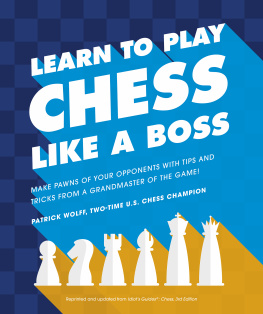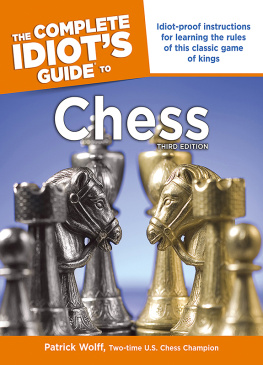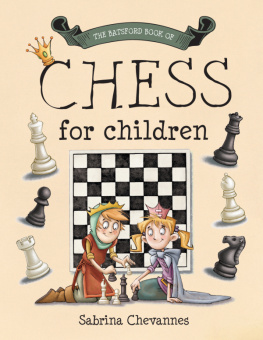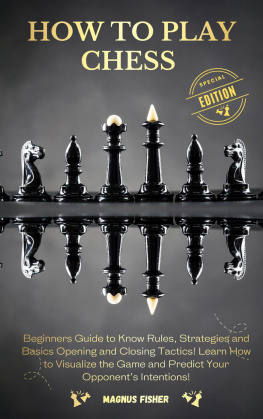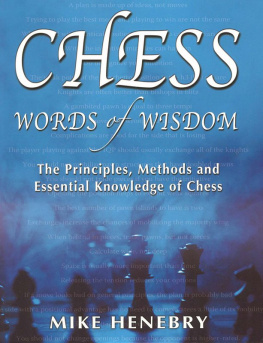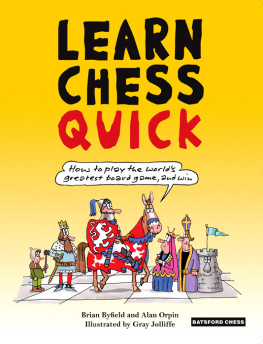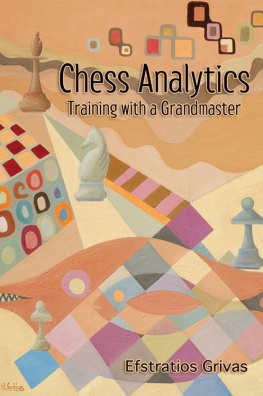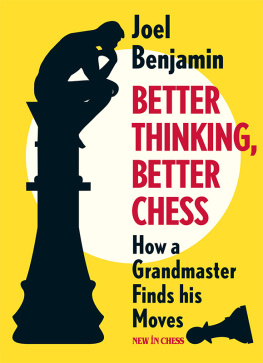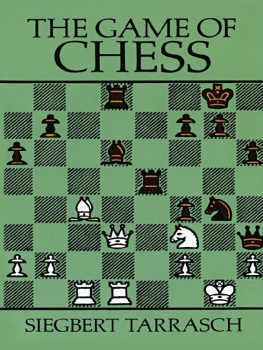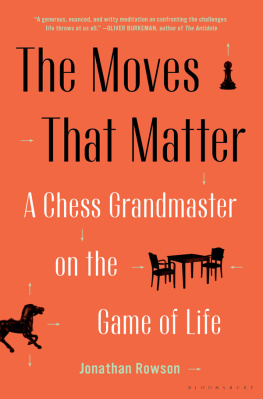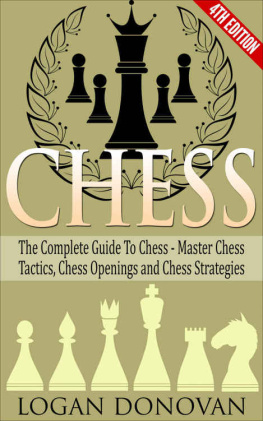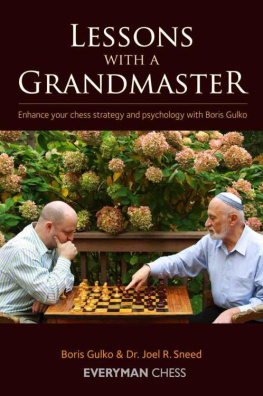Patrick Wolff - Learn to Play Chess Like a Boss: Make Pawns of Your Opponents with Tips and Tricks From a Grandmaster of the Game!
Here you can read online Patrick Wolff - Learn to Play Chess Like a Boss: Make Pawns of Your Opponents with Tips and Tricks From a Grandmaster of the Game! full text of the book (entire story) in english for free. Download pdf and epub, get meaning, cover and reviews about this ebook. year: 2019, publisher: DK Publishing, genre: Children. Description of the work, (preface) as well as reviews are available. Best literature library LitArk.com created for fans of good reading and offers a wide selection of genres:
Romance novel
Science fiction
Adventure
Detective
Science
History
Home and family
Prose
Art
Politics
Computer
Non-fiction
Religion
Business
Children
Humor
Choose a favorite category and find really read worthwhile books. Enjoy immersion in the world of imagination, feel the emotions of the characters or learn something new for yourself, make an fascinating discovery.
- Book:Learn to Play Chess Like a Boss: Make Pawns of Your Opponents with Tips and Tricks From a Grandmaster of the Game!
- Author:
- Publisher:DK Publishing
- Genre:
- Year:2019
- Rating:5 / 5
- Favourites:Add to favourites
- Your mark:
- 100
- 1
- 2
- 3
- 4
- 5
Learn to Play Chess Like a Boss: Make Pawns of Your Opponents with Tips and Tricks From a Grandmaster of the Game!: summary, description and annotation
We offer to read an annotation, description, summary or preface (depends on what the author of the book "Learn to Play Chess Like a Boss: Make Pawns of Your Opponents with Tips and Tricks From a Grandmaster of the Game!" wrote himself). If you haven't found the necessary information about the book — write in the comments, we will try to find it.
Patrick Wolff: author's other books
Who wrote Learn to Play Chess Like a Boss: Make Pawns of Your Opponents with Tips and Tricks From a Grandmaster of the Game!? Find out the surname, the name of the author of the book and a list of all author's works by series.
Learn to Play Chess Like a Boss: Make Pawns of Your Opponents with Tips and Tricks From a Grandmaster of the Game! — read online for free the complete book (whole text) full work
Below is the text of the book, divided by pages. System saving the place of the last page read, allows you to conveniently read the book "Learn to Play Chess Like a Boss: Make Pawns of Your Opponents with Tips and Tricks From a Grandmaster of the Game!" online for free, without having to search again every time where you left off. Put a bookmark, and you can go to the page where you finished reading at any time.
Font size:
Interval:
Bookmark:


For the best reading experience, the following application settings are recommended:
- Color theme: White background
- Font size: At the smallest point size
- Orientation: Landscape (for screen sizes over 9), Portrait (for screen sizes below 9)
- Scrolling view: [OFF]
- Text alignment: Auto-justification [OFF] (if the eBook reader has this feature)
- Auto-hyphenation: [OFF] (if the eBook reader has this feature)
- Font style: Publisher default setting [ON] (if the eBook reader has this feature)
You (or maybe someone you know) have never played chess, but it seems fascinating, and youd like to learn the rules. Or maybe you know how to play, but youve never understood how to tell whether a move was good or bad. Or maybe youve even picked up a few pointers somewhere, but youd really like to be able to play a decent gameand once you get better, you want to take your chess game to the next level by finding people to play (whether online or in person) and by learning how to develop a training regime so you can beat all those new people you will be playing! Plus, it would be really cool to understand the difference between how regular computers play chess and how computers using artificial intelligence (AI) play chess.
This is the book for you.
I played in national and international chess competitions for almost 20 years, both as a child prodigy and then as a full-time pro. During that time, I became one of the best chess players in the country and in the world, including being the US champion twice, in 1992 and 1995. So I have the expertise to explain it all to you.
But just as importantly, I also have years of experience teaching people at all levels how to play chess. I know lots of people think chess is for highbrows, but thats nonsense. Chess is an incredibly fun game. It offers a lifetime of excitement, beauty, and challenge to anyone who takes it up. Sure, chess exercises your brain: thats what makes it so great! But its not just for intellectuals. Anyone can learn chess and learn to play it well, and just about everyone who does so loves it forever after. I bet youll love chess, too.
I wrote the first edition of this book more than twenty years ago to provide people with a guide to learning and playing chess. Since then, Ive been so gratified by all the wonderful feedback I received that I wanted to write this revised edition and take the best suggestions I received during that time to make this book even better. I hope youll find it a fun and helpful introduction to the best game in the world.
Ive divided this book into four parts.
Part 1, Lets Play Chess, gets you started. Chapter 1 gives you some background, and its mostly for fun, while Chapters 2 and 3 teach you the rules and how to read and write chess moves. If youve never played chess before, start here! Even if you have played chess, you might want to check these chapters out to make sure youve got everything straight. In particular, the rest of the book uses chess notation, so if youre not sure how to read and write chess moves, make sure you read Chapters 2 and 3! Chapter 4 teaches you how to checkmate a lone king with just a queen or a rook and a king. Not only is it good to know how to do this just for itself, but also it is an excellent way to learn other things, such as the power of the queen and the rook and how to make plans in chess.
Part 2, Tactics, teaches you the importance of capturing your opponents pieces while holding onto your own, explains how to do so, and shows you some very important and typical ways to use your chess army to capture your opponents forces. The last chapter in Part 2 shifts the focus from capturing the rest of your opponents army to checkmating the king. (You do know that the aim of chess is to checkmate the king, right? If not, make sure you read Chapter 3 in Part 1!)
Part 3, Strategy, gets into some subtler stuff than Part 2. You learn how to strengthen your position, even when theres no move that will capture one of your opponents pieces or menace your opponents king. This part explains how to tell which moves are good or bad and why. By the time youve finished reading this part, youll be able to choose the right strategies to set up the winning tactics. Your opponents wont know what hit them!
Part 4, Beyond the Basics, covers two topics: how to keep learning and how computers play chess. Chapter 15 explains how you can develop a training regime that will allow you to take your game far beyond this book; it also explains the range of digital chess resources out there and shows you how to find chess competition online, in clubs, and in tournaments. Additionally, Chapter 15 recommends some chess resources designed just for kids. Chapter 16 gives you the complete rundown on how computers play chess: from the first machines in the 1950s, to the IBM computer that first beat a world champion, to how AI (artificial intelligence) works. And check out the chess game at the end of Chapter 16 between two top computersits amazing!
A diagram is a picture of a chess position. A lot of this book, especially Parts 13, require you to follow the progress of a chess game as each player makes moves. This presents a dilemma. Even experienced chess players find it difficult to do this without setting up the position on a chess set, and Im sure you would, too. But that means you would have to have a chess set with you (or maybe an app on your phone) whenever you wanted to read this book. That would be a pain in the neck, which is certainly something I want to avoid.
The solution is diagrams, and lots of them. In the first half of the book, youll find that every single position and almost every single move from each position gets a separate diagram. As the book progresses, Ive assumed that youre becoming more comfortable with following one or two moves from a chess position, but youll still see lots and lots of diagrams. My goal is to make it easy for you to read this book anywhere you want, not to force you to have a chess set with you to do so. I still recommend that you have a chess set handy (or use your phone!) for when you want to look at certain positions or moves carefully, but for the most part, you can read this book without a chess set if you want.
When you learn to play chess well, youre learning a skill. And as with any skill, you cant learn it without practice. Therefore, at the end of Chapters 214 Ive included a number of exercises. I strongly recommend that you do each set of exercises after reading each chapter.
The exercises vary in difficulty. Some are relatively easy, and some are quite hard. Dont expect to be able to answer all of the exercises perfectly. I have constructed the exercises so that some of them reinforce what youve already learned, while some of them take you beyond what was covered in the chapter. Try your best to do the exercises and then compare your work with the answers in the back of the book. (You may want to try to do them just from looking at the accompanying diagram, or you may want to set the position up and move the pieces as you think. Either way you do the exercises is fine.) The exercises are not meant to be a test; their purpose is to help you learn the material better. Although the harder exercises will force you to work more, I think youll find them especially instructive and rewarding.
Font size:
Interval:
Bookmark:
Similar books «Learn to Play Chess Like a Boss: Make Pawns of Your Opponents with Tips and Tricks From a Grandmaster of the Game!»
Look at similar books to Learn to Play Chess Like a Boss: Make Pawns of Your Opponents with Tips and Tricks From a Grandmaster of the Game!. We have selected literature similar in name and meaning in the hope of providing readers with more options to find new, interesting, not yet read works.
Discussion, reviews of the book Learn to Play Chess Like a Boss: Make Pawns of Your Opponents with Tips and Tricks From a Grandmaster of the Game! and just readers' own opinions. Leave your comments, write what you think about the work, its meaning or the main characters. Specify what exactly you liked and what you didn't like, and why you think so.

